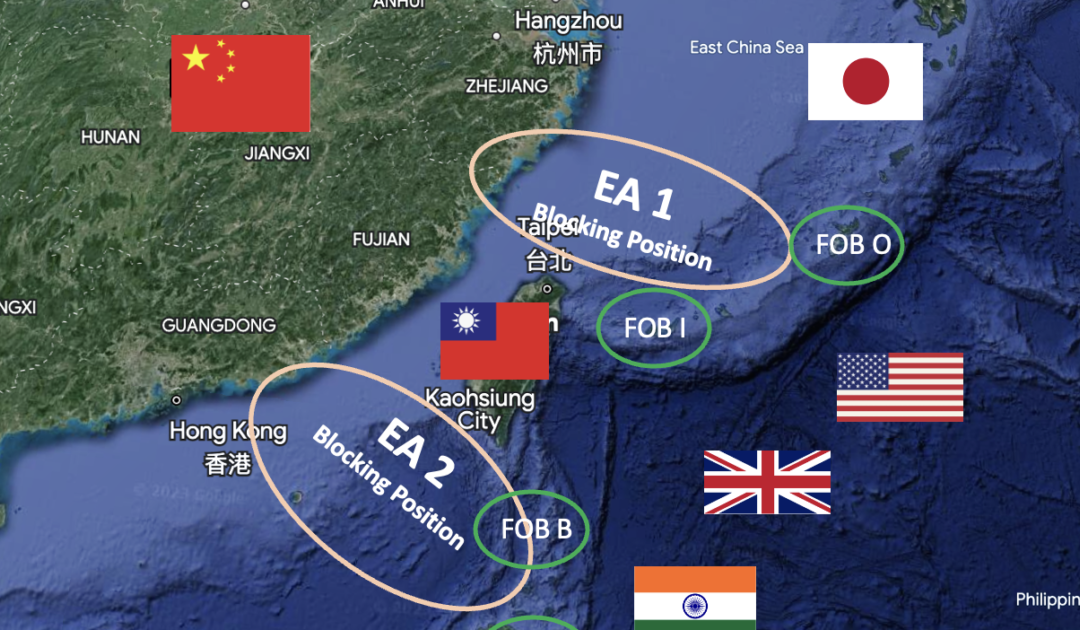Recent discussions between journalists and Taiwanese authorities helped generate some interesting conversations and potential new pathways for positively changing the dynamics of cross-strait tensions.
There has been a pathway of greater frankness toward China, which started after the July NATO summit communique holding the Chinese regime to account for its role as the key enabler of Russian aggression in Ukraine. China took great umbrage to being called out.
During the week of Sept. 9, the Taiwanese Ministry of Foreign Affairs hosted 11 international journalists for a week-long gathering to receive briefings from different Taiwanese government ministries and think tanks.
This was a unique opportunity for journalists to engage deeply and broadly with Taiwanese centers of governance and influence that are not regularly accessible to non-Taiwanese journalists. It was also an opportunity for journalists to provide observations and feedback to the Taiwanese government and the think tanks that are influential in developing Taiwanese policy.
In addition, the
United States and the EU put out a joint statement on Taiwan that omitted the “one China” policy statement. Not including this statement is a very significant break and departure from years of routine inclusion. It was likely intended as a message that the placation of China is coming to an end.
Respectfully Transforming Taiwan’s Identity
One interesting discussion was about theoretical views on how Taiwan should be titled on the world stage. The tensions of the Taiwan Strait draw from years of perception and assertion of agendas viewed through titles and symbols from times past that cloud open dialogue in the present.
One point of discussion was perhaps a name change for the country of Taiwan. Its official name, the Republic of China (ROC), causes confusion in many venues. Most recently, the magnificent youth baseball team of Taiwan played in the Little League World Series in the United States, and the American announcers
caused a bit of a kerfuffle by referring to them as “Taiwan” instead of the contortion of “Chinese Taipei” created by international lawyers to mollify the Chinese regime. Declaring the new country the “Republic of Taiwan” could show a distinction without implying an immediate departure.
A similar matter could be a new flag. Symbols matter, and the historic ROC flag can ignite images of past conflict. Honorably and respectfully retiring the old colors and transitioning to a new flag could help mend longstanding grudges and animosity with a clear delineation between the past and the present and future. Some older generations may still have emotional attachments, but handling name and flag changes in a dignified manner can help contribute to more constructive dialogue. This also defuses the debate over the meaning of “one China,” which serendipitously was dropped in the aforementioned U.S.–EU communique, a very significant diplomatic step.
Now, with clarity, the People’s Republic of China (PRC) can live uncontested as “one China,” while a new country with 24 million citizens can be allowed. This can also remedy the weaponization and intentional misrepresentation of U.N. Resolution 2758, issued in 1971, which the PRC has used to punish Taiwan. Some of those who actually studied U.N. Resolution 2758 know the action in the resolution removed the representatives of Chiang Kai-shek but did not forbid nor even reference the country of Taiwan.
Setting Aside Past Territorial Claims
To help assure the PRC of its “one China,” the “Republic of Taiwan” could formally renounce all claims to the mainland. This statement could be an important statement of peaceful coexistence.
One historical event worth mentioning is Edgar Snow’s
1936 interview with Mao Zedong. During this interview, Mao was asked about the status of geographic territories such as Korea after the defeat and withdrawal of Imperial Japan.
The response was fascinating. Mao said about Korea and Taiwan: “We will extend them our enthusiastic help in their struggle for independence. The same things applies [sic] to Formosa.”
This was pointed out by noted China expert Isabel Hilton, who was part of the international journalists’ delegation to Taiwan. The Snow interview is an overlooked part of history. A two-way agreement to cease claims over each other’s territories can help lay the pathway for peaceful coexistence.
PRC Resolves Unpaid Sovereign Debt
Another little-known but large issue is the unpaid sovereign debt of China and its successor, the PRC. Successors are normally responsible for a nation’s unpaid debt. Bonds to China were issued and defaulted upon in 1938 and have never been fully paid off. As part of the UK’s negotiations with the PRC in the 1980s for the transition of Hong Kong, a settlement was made on the UK portion of the debt.
The
current value of this unpaid Chinese sovereign debt to the United States is close to $1 trillion. This is sovereign debt, and the U.S. Treasury is still servicing interest payments. Beijing stepping up and taking ownership of this debt will codify the PRC as the leader of the “one China” it seeks, while the other elements, such as new country names, flags, and cessation of claims on each other’s territories, will allow the peaceful existence of Taiwan.
Of course, these issues are difficult, and some people are still passionate about these symbols. However, nothing will change until something changes, and engaging in dialogue on these matters is better than unrestricted if covert warfare, which can lead to open warfare, which no one wants.
Views expressed in this article are opinions of the author and do not necessarily reflect the views of The Epoch Times.
All viewpoints are personal and do not reflect the viewpoints of any organization.
This article first appeared in Epoch Times and was reprinted with permission.


